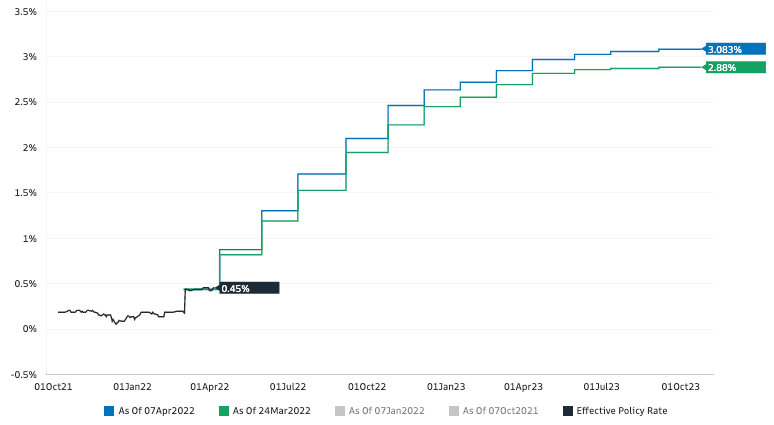Canadian Dollar Bulls Look to Bank of Canada for Further Impetus
- Written by: Gary Howes
-
- Canada adds 72K jobs in March
- Cementing expectations for 50bps rate hike Wednesday
- But CAD might have fully digested rate hike expectations
- As markets anticipate record breaking hiking cycle

Image © Adobe Stock
The Bank of Canada is expected to raise interest rates on Wednesday by 50 basis points following another strong labour market reading, but it will take some decidedly 'hawkish' guidance to meaningfully motivate the Canadian Dollar higher say analysts.
It was reported Friday that Canada added a further 72.5K jobs in March, with the majority being in full time employment.
"The Canadian labour market continued to defy gravity in March. After a spectacular hiring spree in February, a pause would have been quite normal. This, however, did not occur. Instead, private sector hiring continued," says Matthieu Arseneau, an economist at the National Bank of Canada.
The market is however amply priced for Bank of Canada action: a 50 basis point hike is already digested by the market with a further 170 points of hikes expected over the remainder of the year.
Expectations for such an aggressive path of hikes ultimately recognises the scale of inflation Canada is facing as well as the robust health of the economy.
"Inflation definitely is too high," says Marshall Gittler, Head of Investment Research at BDSwiss Group, who notes CPI inflation is running at 5.7% while two of the three core measures of inflation are above the target range.
Inflation is above trend, unemployment is below pre-pandemic levels and consumer demand is strong.
"We expect a 50bp interest rate increase given the economy is in a strong position, particularly given commodity production is such an important story, employment is at record levels, and inflation is at 30+ year highs," says James Knightley, Chief International Economist at ING.
"While the current monetary policy would be appropriate in times of economic difficulty, it is simply inadequate in the present situation (arguably for several months now). This morning's report cements our view that the BoC will raise rates by 50 basis points next week," says Arseneau.
The Canadian Dollar will enter the midweek policy event as 2022's second-best performing major currency, lagging only the Australian Dollar.
High commodity prices - particularly energy prices - have boosted energy exporters such as Canada and Australia.
But both the Australian Dollar and Canadian Dollar have also benefited from a rapid rise in expectations for higher interest rates at the Bank of Canada and Reserve Bank of Australia.
"We are prepared to act forcefully," said Bank of Canada Deputy Governor Sharon Kozicki in a recent speech. "The reasons are straightforward: inflation in Canada is too high, labour markets are tight and there is considerable momentum in demand."
Money market data shows investors are now pricing in the most aggressive and biggest hiking cycle at the Bank of Canada on record.
Above image courtesy of Goldman Sachs.
The consensus amongst analysts however is that such aggressive hike expectations are embedded in the Canadian Dollar's value and where the Canadian Dollar ends next week depends on whether hiking expectations can be lifted yet further or if they come down.
Gittler explains if the market perceives the Bank of Canada as being more hawkish than expected, "this could help to bolster the currency."
"CAD may not benefit immediately from the hike – which is fully priced in – but should stay supported beyond the very short term," says Francesco Pesole, FX Strategist at ING Bank.
"Looking beyond the very short term, the notion of front-loaded monetary tightening combined with strong economic fundamentals and – above all – a supportive external environment thanks to high oil and gas prices should all combine to keep the Canadian dollar attractive," he adds.
Pesole sees a "gradual" appreciation of the Canadian Dollar against the U.S. Dollar over coming months as USD near-term strength will be notable.
But Canadian Dollar strength in the near-term is expected against other G10 currencies, particularly 'low yielder' currencies such as the Euro, according to ING.











